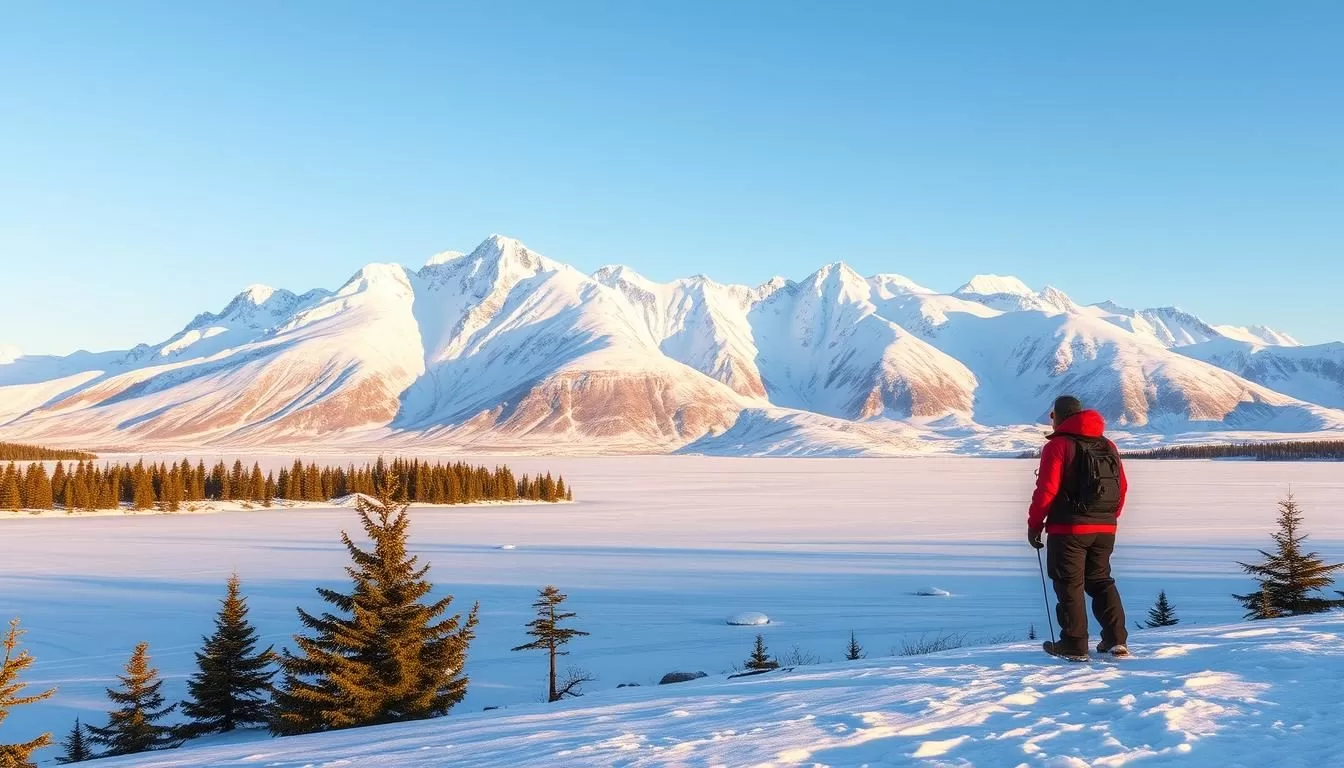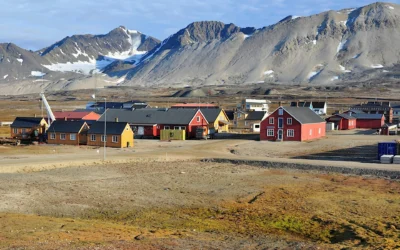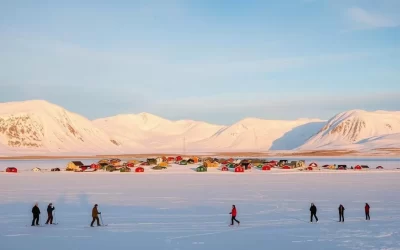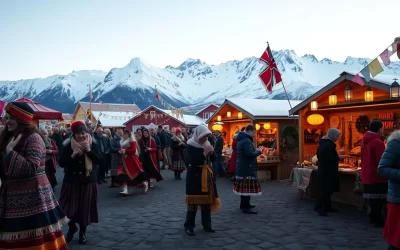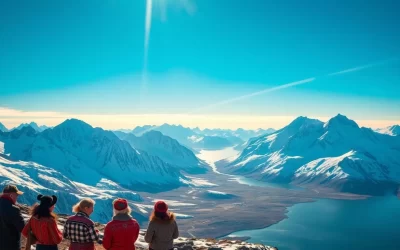✓ Accommodations✓ Flights✓ Rental Cars
You’re planning a trip to one of the world’s most remote and fascinating Arctic destinations. Timing is everything when visiting this unique archipelago.
The right time can make all the difference in experiencing the midnight sun, witnessing the northern lights, or enjoying winter activities like dog sledding.
The best time to visit depends on your interests. The polar summer, northern lights season, and sunny winter offer distinct opportunities for wildlife watching and Arctic adventures. This guide will help you navigate the seasonal changes and plan your trip accordingly.
By understanding the weather patterns and temperature ranges, you’ll be equipped to make the most of your Arctic adventure.
Understanding the Arctic Climate of Svalbard and Jan Mayen
Understanding the Arctic climate of Svalbard and Jan Mayen is crucial for planning a successful trip. The islands’ unique geographical location significantly influences their climate, making it essential to grasp the various factors at play.
Geographical Location and Climate Classification
Svalbard and Jan Mayen are located in the Arctic Circle, far north of the mainland. This geographical position subjects them to an Arctic climate, characterized by long, cold winters and short, cool summers. The climate is classified as Arctic, with significant influences from the surrounding Arctic Ocean.
Temperature Patterns Throughout the Year
Temperature in Svalbard and Jan Mayen varies significantly throughout the year. Winters are harsh and cold, while summers are relatively mild. The average temperature ranges from -20°C to 6°C (-4°F to 43°F) throughout the year. Extreme cold snaps are common during the winter months, making it essential for visitors to be well-prepared.
Daylight Phenomena: Midnight Sun and Polar Night
One of the most striking features of Svalbard and Jan Mayen’s climate is the dramatic variation in daylight hours throughout the year. The midnight sun occurs from approximately April 20 to August 22, providing 24 hours of continuous daylight. Conversely, the polar night, which occurs from mid-November to late January, plunges the islands into continuous darkness.
- The midnight sun offers surreal golden lighting conditions, particularly treasured by photographers.
- Polar night brings a unique, ethereal quality to the landscape, with the Northern Lights often visible.
- Between these extremes, daylight hours change rapidly, with March experiencing an increase of nearly 20 minutes of daylight each day, and September seeing a similar rate of decrease.
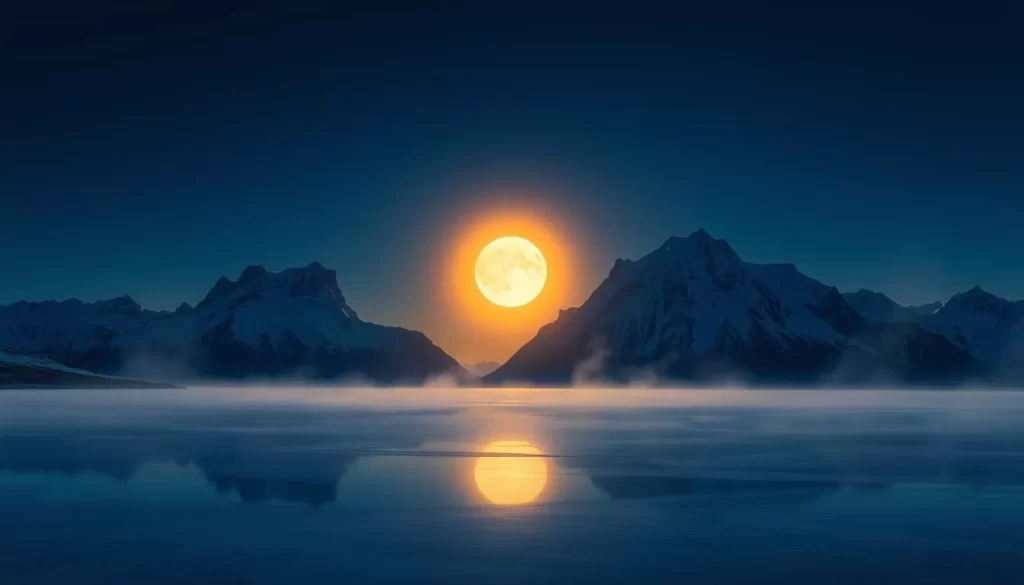
Svalbard and Jan Mayen: Best Months for a Weather-Savvy Trip
For travelers aiming to explore Svalbard and Jan Mayen, knowing the best months to visit can significantly enhance their experience. The archipelago offers a range of experiences that vary greatly with the seasons.
Peak Season: June to September
The peak tourist season in Svalbard and Jan Mayen is from June to September. During these days, the weather is relatively mild, and the 24-hour daylight allows for extended exploration. This period is ideal for hiking, kayaking, and wildlife viewing, including spotting polar bears and various marine life. The accessibility to many areas is at its best during this time, making it a popular period for travel.
The midnight sun is a significant attraction, providing constant daylight that facilitates adventures in the Arctic landscape. However, this is also the peak tourist season, meaning more crowds and higher prices for tours and accommodations.
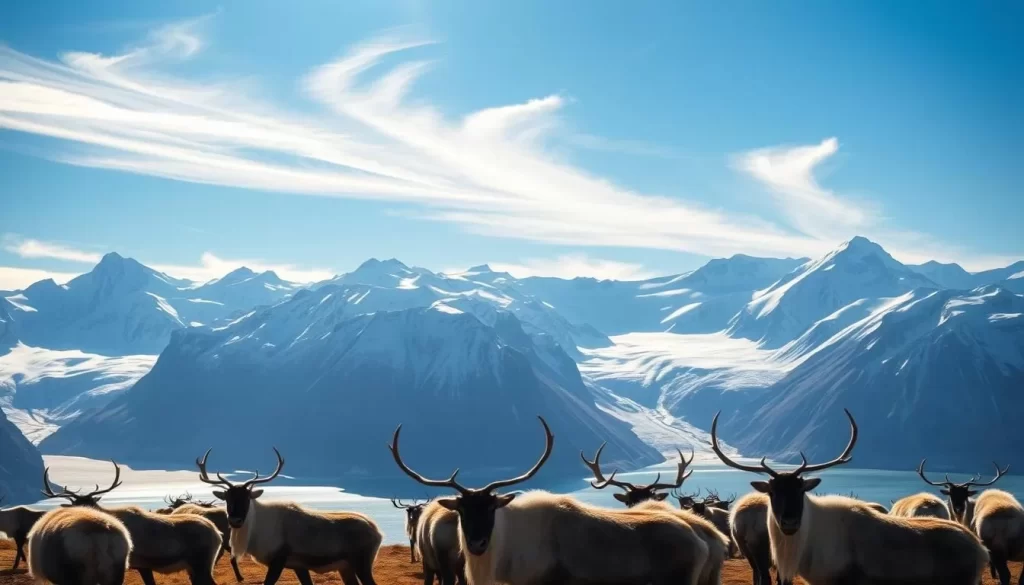
Off-Season Benefits: March to May
For those who prefer fewer tourists and don’t mind the cold, the period from March to May is an excellent time to visit. The winter landscape offers fantastic opportunities for snow sports like dog sledding and snowmobiling. The snow-covered terrain is perfect for winter adventures, and the relatively calmer weather compared to the harsh winter months makes it an attractive period for certain activities.
Specialized Experiences: October to February
The period from October to February is characterized by the polar night and is the best time to see northern lights. The darkness that envelops the islands from mid-November to late January creates ideal conditions for viewing the northern lights. While the harsh weather conditions and extreme cold require careful preparation, this period offers unique experiences such as northern lights photography and stargazing. Travelers during this time are rewarded with authentic Arctic experiences and significantly fewer tourists.
Summer in the Arctic: June to August
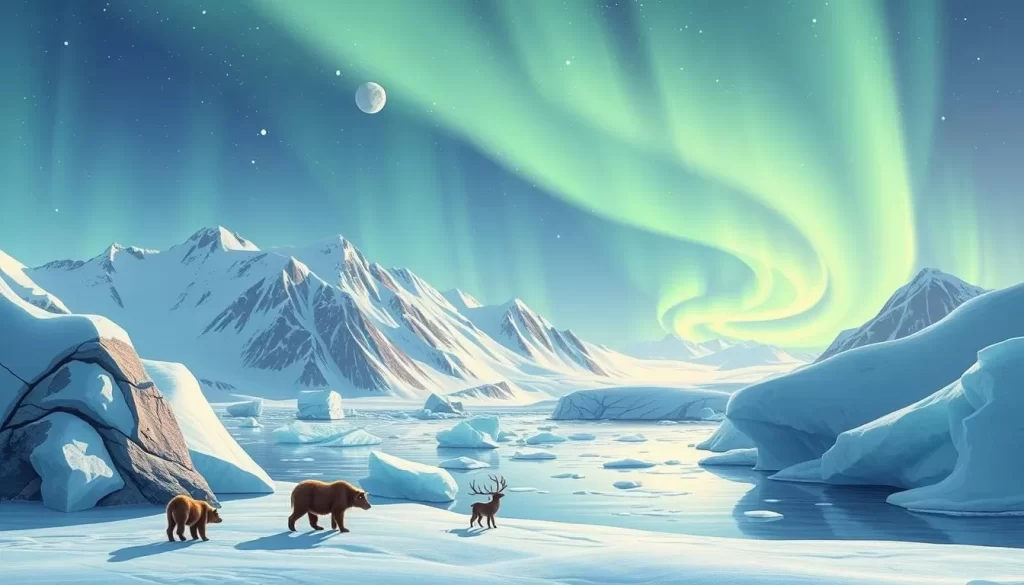
The summer season in Svalbard is the perfect time for an expedition cruise, offering unparalleled access to remote places.
Temperature and Weather Conditions
During the summer months, Svalbard experiences relatively mild temperatures, ranging from a few degrees above freezing to around 10°C (50°F). The sea ice melts significantly, making it easier to navigate the waters.
24-Hour Daylight Experience
One of the unique aspects of Svalbard in the summer is the 24-hour daylight, which allows for extended exploration time. This phenomenon, known as the Midnight Sun, provides a surreal experience as you explore the Arctic landscapes.
Accessibility and Navigation
Summer offers expedition cruises the opportunity to navigate through waters that are otherwise frozen. The melting ice and sea ice retreat allow for the circumnavigation of Spitsbergen, Svalbard’s largest island, particularly in July and August. This accessibility opens up places that are otherwise inaccessible, including the northern and eastern coasts where polar bears are frequently spotted.
Some key benefits of summer expedition cruises include:
- Unparalleled accessibility to Svalbard and Jan Mayen as the retreating sea ice opens waterways.
- The ability to navigate to the most remote regions of the archipelago, including areas where polar bears are most frequently spotted.
- Complete circumnavigation of Spitsbergen by July and August, accessing rarely visited locations.
- 24-hour daylight enhancing safety and allowing for flexible scheduling of landings and exploration.
- A variety of transportation options, including larger expedition ships, small vessel cruses, kayaking expeditions, and inland hiking routes.
Wildlife Viewing Opportunities by Season
Wildlife viewing in Svalbard and Jan Mayen is a year-round experience, with each season bringing its unique attractions. As you explore this Arctic region, you’ll have the chance to witness a diverse range of wildlife in their natural habitats.
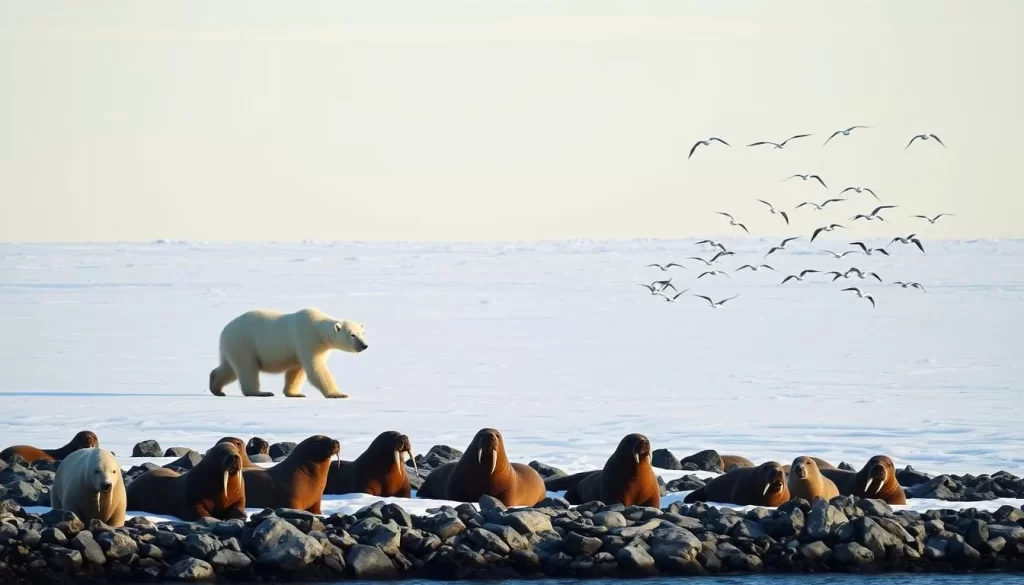
Polar Bears: Best Months for Sightings
Polar bears are a highlight of any Arctic expedition. The best months for polar bear sightings are typically between May and September, when the sea ice melts and bears come ashore. During this period, you’re likely to spot these majestic creatures roaming the coastal areas and islands. June and July are particularly good months, as the bears are more active during this time.
Marine Life: Whales, Walruses, and Seals
Svalbard and Jan Mayen are home to an abundance of marine life, including whales, walruses, and seals. The summer months offer excellent opportunities to see these creatures in their natural habitat. Whales, such as humpback and minke whales, can be spotted in the waters around the islands, while walruses and seals can be seen hauled out on the ice or on rocky shores.
Bird Watching in the Arctic
The summer months are ideal for bird watching in Svalbard and Jan Mayen. Millions of migratory birds flock to the archipelago to breed during this time. You’ll witness an extraordinary avian spectacle if you visit between June and mid-August, when massive bird cliffs like Alkefjellet become home to tens of thousands of breeding pairs. Some of the species you can observe include Arctic terns, Brünnich’s guillemots, little auks, kittiwakes, glaucous gulls, and the rare ivory gull. Bird watching is particularly rewarding in June and early July when breeding activity peaks.
Spring in Svalbard: March to May
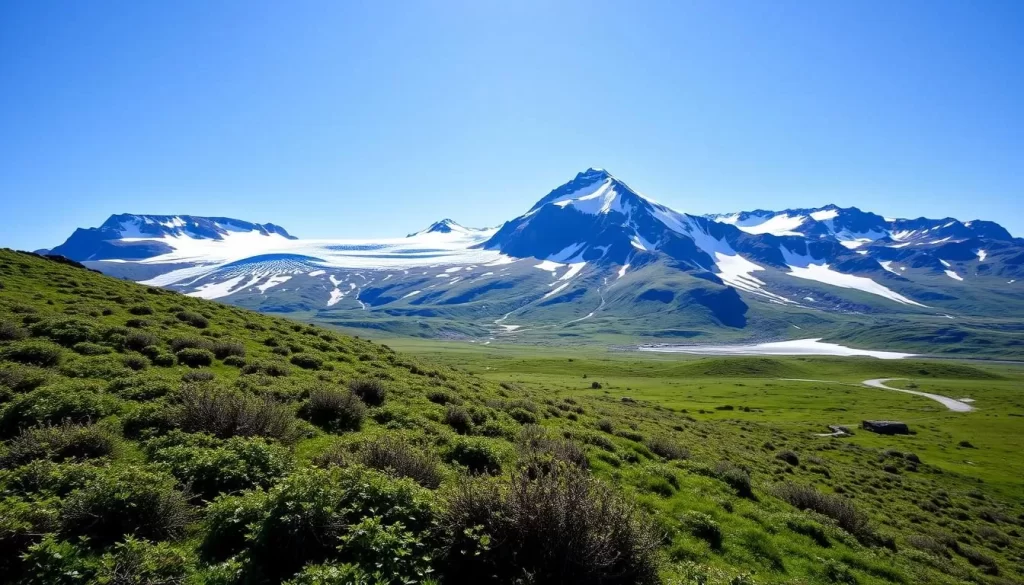
Spring in Svalbard, from March to May, offers a distinct Arctic experience, characterized by snow-covered landscapes and returning daylight. As the days grow longer, the landscape transforms, offering unique opportunities for exploration and photography.
The “Sunny Winter” Period
The period from March to May is often referred to as the “sunny winter” due to the relatively clear skies and crisp air. This makes it an ideal time for outdoor activities such as snowmobiling and dog sledding. You can enjoy these snow activities in the pristine Arctic environment.
Snow Activities and Experiences
During the spring, Svalbard offers a range of snow-based activities. You can explore the snow-covered terrain on a guided snowmobile tour or experience the tranquility of dog sledding through the Arctic landscape. The crisp air and clear skies add to the exhilaration of these experiences.
Photography Opportunities in Spring
April is particularly great for photography as Svalbard emerges from the depths of winter. The combination of snow-covered landscapes, returning light, and dramatic weather creates exceptional photographic conditions. You’ll discover that the extended “golden hours” of spring provide hours of perfect lighting conditions each day. The contrast between pristine white snow and the deep blue of the sky and sea creates striking compositional opportunities.
As you explore Svalbard in the spring, you’ll have the chance to capture animals in their winter coats against snow backgrounds, including Arctic foxes, Svalbard reindeer, and occasionally polar bears on the sea ice. The crisp, clear air offers exceptional visibility, allowing you to capture distant mountains and glaciers with remarkable clarity.
Autumn Transition: September to October
As the summer months come to a close, Svalbard and Jan Mayen undergo a transformative change, ushering in the autumn season with its unique charm. The temperatures begin to drop, and September is noticeably cooler than the summer months. This transitional period offers a distinct character to the region, making it an attractive time for visitors.
Changing Light and Landscapes
The autumn season brings a dramatic change in the light and landscapes of Svalbard. The languorous sunrises and sunsets paint the scenery in autumnal colors, creating a picturesque landscape. Photographers and nature enthusiasts flock to capture the beauty of this unique time. The sea ice is at a minimum during September, making it easier to reach far-off places like Austfonna, known for its 180km ice wall and dramatic waterfalls.
Wildlife Behavior During Autumn
Autumn is a significant time for wildlife in Svalbard, as the changing environment influences their behavior. The cooler temperatures and shifting landscapes affect the habitats and migration patterns of various species. Wildlife enthusiasts can observe the adaptations and behaviors of polar bears, whales, and other marine life during this time. The reduced sea ice extent in September allows for expedition cruises to explore remote locations that might be inaccessible during other months.
Specialized Autumn Expeditions
Several expedition cruises operate in September and early October, taking advantage of the unique conditions offered by the autumn transition. These specialized cruises are designed to maximize the opportunities of the season, with expert guides navigating the increasingly challenging weather conditions. Photography-focused expeditions are particularly popular, aiming to capture the dramatic light and landscape transformations characteristic of autumn in Svalbard.
Winter and Polar Night: November to February
For those willing to brave the cold, the winter months in Svalbard and Jan Mayen reveal a side of the Arctic that’s both challenging and deeply rewarding. December in Longyearbyen is marked by persistent wintry conditions, with temperatures reaching their second-lowest point at -11°C (12.2°F), just one degree more than the year’s lowest in February.
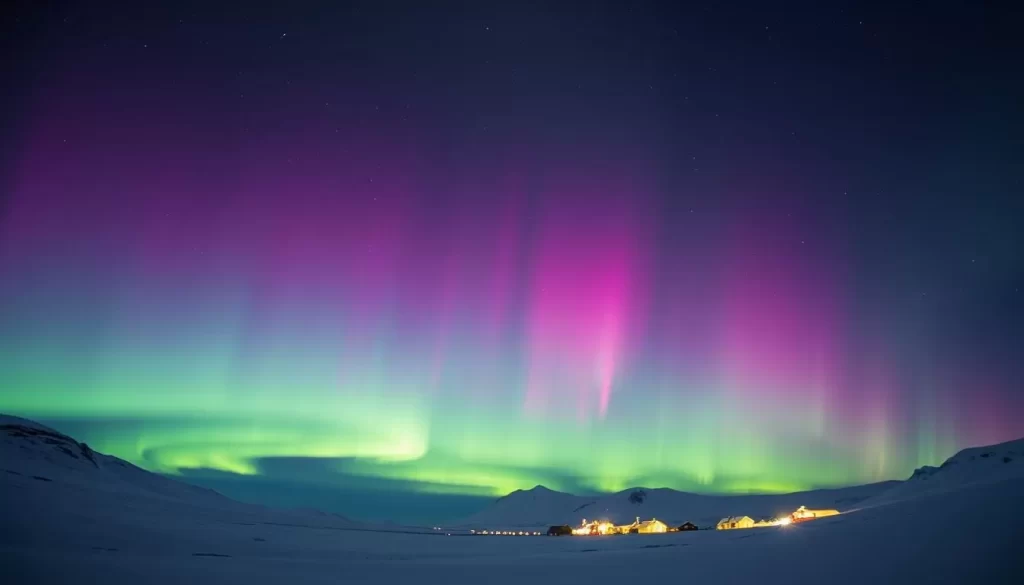
Experiencing the Northern Lights
One of the main attractions during the polar night is the opportunity to witness the spectacular display of the Northern Lights. The darkness of the polar night provides ideal conditions for viewing this natural phenomenon.
Winter Activities and Adventures
Despite the harsh conditions, winter in Svalbard and Jan Mayen offers a range of activities and adventures. From dog sledding and snowmobiling to exploring the frozen landscapes, there’s no shortage of exciting experiences.
Preparing for Extreme Cold and Darkness
Visiting during the polar night requires thorough preparation. Temperatures can drop below -15°C (5°F) and reach as low as -30°C (-22°F) during cold snaps. Proper Arctic clothing, including insulated boots and multiple insulating layers, is essential. Additionally, the psychological impact of continuous darkness should not be underestimated, with many hotels offering vitamin D supplements and light therapy options.
Month-by-Month Weather Guide for Svalbard
As you plan your trip to Svalbard, understanding the month-by-month weather guide is crucial for a well-prepared adventure. Svalbard’s Arctic climate means that the weather varies significantly throughout the year, and being informed will help you make the most of your experience.
Winter Months: December to February
During the winter months, Svalbard is in the grip of polar night, with temperatures plummeting to as low as -12°C (10.4°F) in February. The landscape is transformed into a winter wonderland, with ice covering the fjords and snow blanketing the terrain. This period is ideal for experiencing the Northern Lights and engaging in winter activities like dog sledding and snowmobiling. You’ll need to be well-prepared for the extreme cold and darkness.
Spring Months: March to May
As spring arrives, the daylight hours begin to increase, and the temperatures gradually rise. March is still quite cold, but by May, the temperature can reach around 0°C (32°F) during the day. This season offers a range of outdoor activities, including snowmobiling, dog sledding, and hiking. The landscape is still largely snow-covered, but the increasing daylight makes it an excellent time for photography.
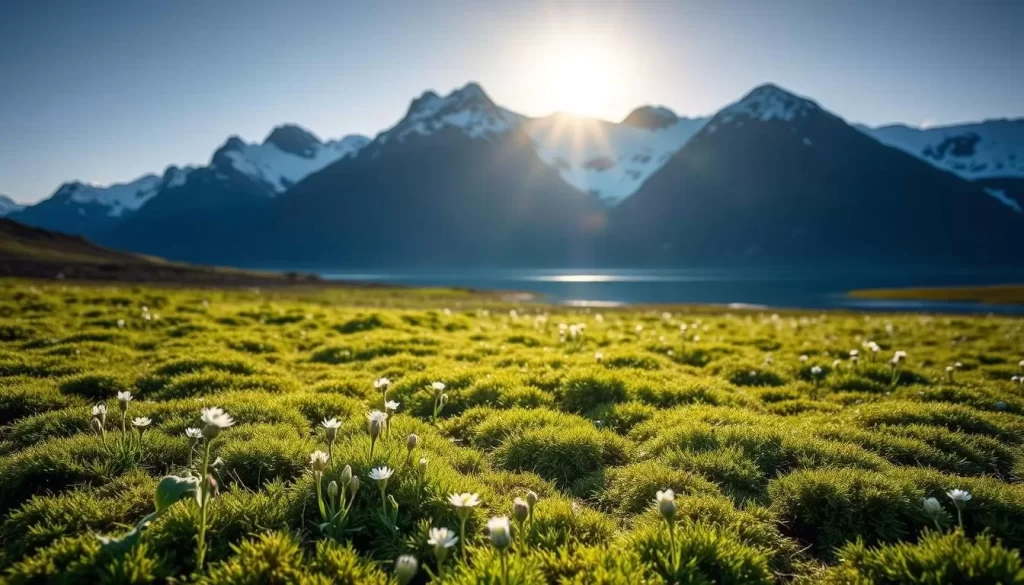
Summer Months: June to August
The summer months bring 24-hour daylight, allowing for extended periods of outdoor exploration. Temperatures can range from 6°C to 12°C (42.8°F to 53.6°F), making it the warmest time of the year. This is the peak tourist season, with activities like hiking, kayaking, and wildlife watching being particularly popular. The accessibility of the terrain is at its best during these months.
Autumn Months: September to November
Autumn in Svalbard is characterized by rapidly decreasing daylight hours and dropping temperatures. By November, the polar night begins, and the temperatures can drop to -8°C (17.6°F). The landscape transforms from autumn colors to a winter landscape, with the sea ice starting to form. This season is marked by dramatic weather changes, with increasing storm frequency and rapidly dropping temperatures. The shoulder season, particularly September, offers a good balance between relatively mild conditions and fewer visitors.
Planning Your Weather-Savvy Arctic Adventure
The best time to visit Svalbard depends on your adventure goals. Svalbard offers unique experiences throughout the year, from the frozen landscapes of the early season to the 24-hour daylight of summer and the beautiful sunsets of autumn.
Align your trip with the season that matches your interests. For wildlife enthusiasts, particularly those hoping to see polar bears, the period between May and September is ideal due to accessible wildlife areas and 24-hour daylight.
If you’re interested in the northern lights, plan your visit during the polar night from November to February. For adventure seekers, the “sunny winter” period from March to May is perfect for snow activities.
Consider booking your expedition cruises in advance, especially for peak season visits (June-August). Regardless of when you visit, be prepared for rapidly changing weather conditions.
The above is subject to change.
Check back often to TRAVEL.COM for the latest travel tips and deals.
